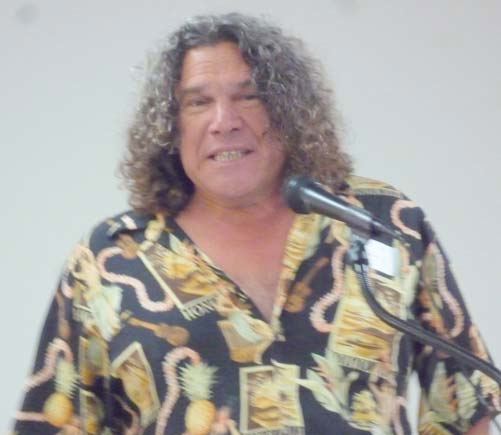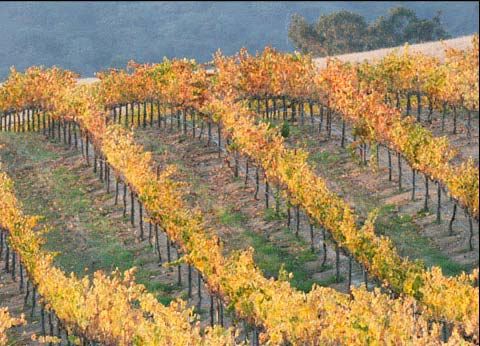Pisoni Vineyard: Pinot Noir from Heaven
“On some other planet encircling one of 200 billion stars in the Milky Way there may be
intelligent life that has not heard of Pisoni Vineyard, but not on this planet.”
Back label of Tantara Pisoni Vineyard Pinot Noir
The Santa Lucia Highlands of California’s Monterey County lie in what is often called “Steinbeck Country,”
referencing the celebrated twentieth century writer John Steinbeck. His novel, Grapes of Wrath, was published
in 1939 and won both a Pulitzer Prize and Nobel Price, and has become one of the most widely read and
discussed novels on college campuses throughout the United States. The title of the novel is an indirect
reference to a passage in the Bible (Revelation 14:19-20) that speaks to deliverance from oppression.
Steinbeck noted that the Santa Lucia Highlands “was like Heaven.” Others have tabbed it Eternidad Paraiso or
eternal paradise. In 1982, Gary Pisoni, realizing that the Santa Lucia Highlands provide a heavenly setting for
Pinot Noir, planted six acres of vines in virgin, well-drained, decomposed granite and sandy loam soil on his
father’s 280-acre cattle ranch. He was not the first to plant vinifera grapes in the Santa Lucia Highlands. The
planting of wine grapes dates to the 1790s when Spanish missionaries arrived, while the modern era of
winegrowing began with the plantings of Rich and Claudia Smith at Paraiso, Micky Hahn at Smith & Hook, the
McFarland family at Sleepy Hollow, and Phil Johnson at La Estancia.

Gary (photo right) had come from generations of farmers who tended row
crops long before he was born. Jane and Eddie Pisoni, Gary’s parents, had
started farming vegetables in the Salinas Valley in 1946. Gary developed an
interest in French wines while in college, reading any books he could find
about Pinot Noir and studying Burgundy. When he graduated, he headed for
Europe where he had his wine epiphany with a Burgundy from Domaine de
la Romanee-Conti. Upon returning to the states, he was eager to find a way
into the wine business. When he told his father he wanted to plant
grapevines on the family cattle ranch, he was met with several objections,
not the least of which was the cost. Gary countered to his father, “Have you
ever been to a $250 lettuce tasting?” His father relented and a famous
vineyard was born.
The original planting, located at 1,300 feet above the Salinas Valley at the southern end of the Santa Lucia
Highlands AVA, consisted of Cabernet Sauvignon, Cabernet Franc, Merlot, Chardonnay and Pinot Noir. The
vines were originally irrigated with water trucks. It took ten years of witches and well drillers to tap into springs
that the American Indians valued for their healing qualities and the Spanish used to irrigate their vineyards.
Once a water source was located, an additional 40 acres of Pinot Noir were planted in several blocks ranging in
size from .5 acre to 16.8 acres with different trellising and vine spacing, using both own-rooted and grafted
vines. The plantings on the hillsides are known as Big Block, Susan’s, Old Vineyard and Elias blocks. The
blocks located in small valleys are Mommy’s, Hermanos, Camper, Mario and Tina. The different blocks have
distinct soils and microclimates but all benefit from the fog and afternoon breezes that curls in from nearby
Monterey Bay contributing to the area’s cool mornings and nights. The own-rooted Elias Block, consisting of 4.5
acres planted in 1995, is used for the estate Pisoni Pinot Noir that is known to Pinot geeks as “Pisoni-Pisoni,”
differentiating it from Pisoni vineyard-designated bottlings from other California producers. The Mommy’s and
Camper blocks are also own-rooted. Gary Pisoni believes own-rooted vines make more flavorful Pinot Noir.
The source of the Pinot Noir scion material in the Pisoni Vineyard is subject to much speculation. At least
some of the cuttings have been long rumored to originate as “suitcase selections” from the La Tâche Vineyard
in Vosne-Romanee (Gary will not admit to this), but other reports locate the source as a vineyard in Monterey
County. In any case, the Pinot Noir plantings have become known as the Pisoni clone or selection.
Gary’s winemaker son, Jeff Pisoni, and viticulturist son, Mark Pisoni, created the Pisoni label, releasing the first
estate Pinot Noir in 1998. A second label, Lucia, meaning “light,” debuted in 2000. The Lucia label includes
Chardonnay, Syrah, Cabernet Sauvignon and Rosé, as well as Pinot Noir. Some of the grapes for Lucia wines
are sourced from the Pisoni Vineyard, some are designated Garys’ Vineyard, and some are a blend of both
vineyards. The Lucia wines spend less time in barrel, are raised in less new oak and are vinified with less
whole cluster than the Pisoni Estate Pinot Noir, and are accordingly priced less.
Unraveling the Pisoni puzzle
The Pisoni family, Gary and Gary’s sons, Jeff and Mark, own and farm Pisoni Vineyard, and in
partnership with Gary Franscioni, Garys’ Vineyard. Garys’ Vineyard is located eight miles
north of Pisoni Vineyard in a somewhat cooler area, and was planted in 1997. Gary Pisoni
and Gary Franscioni were school mates and lifelong close buddies. Garys’ Vineyard is 50-
acres in size, with 42 acres planted to Pinot Noir with cuttings from the Pisoni Vineyard.
Franscioni also owns Rosella’s Vineyard nearby, named after his wife. Rosella’s is planted to
Pisoni selection, Pommard, and Dijon clones of Pinot Noir. These three vineyards are among
the most sought-after contractual vineyards in California.
In 2008, the Franscioni and Pisoni families began planting the Soberanes Vineyard, located in
the heart of the Santa Lucia Highlands and owned by the Bianchi family.
When Gary Pisoni stepped into winegrowing in 1982, the growers in the Santa Lucia Highlands often reached
for high tonnage and sold their wine in bulk to other counties. Gary Pisoni took another tack, one that had
begun to show promise at the time at Chalone, Calera and Sanford. He emphasized meticulous farming,
looking for quality rather than quantity. The Pisoni’s have since become famous for their uncompromising grape
farming. Vineyard mangager Mark Pisoni has a B.S. in Agricultural Economics from the University California
Davis and a Master’s Degree in Farm Business Management from Cornell University. He directs the activities
of both the Pisoni vegetable farm and vineyards. Most of their 15-person vineyard crew have been with the
Pisonis for years including vineyard supervisor Mario Reyes Angel, now a veteran of over 15 years at the
Pisoni Vineyard. Dozens of passes are made through the vineyard each growing season, with workers
sculpting the vines through shoot removal and positioning, fruit thinning, green fruit dropping and leaf pulling.
The resulting Pinot Noir fruit is among the most highly prized in California.

Jeff Pisoni (photo right), an enology graduate of California State University Fresno,
took over the winemaking for the Pisoni and Lucia labels in 2002. Before that, the
Pisoni Estate Pinot Noir was crafted at off site wineries initially by Marc Aubert and
subsequently by Vanessa Wong. Michael Zardo, a graduate of California State
University Fresno, is currently the assistant winemaker at Pisoni Vineyards and has
been with Pisoni since 2003. The Pisoni family have had their own winery since
2007.
Winemaking is traditional. Whole cluster inclusion will vary depending on the
development of stems, tannin maturity and other factors reflected by the vintage. A
2 to 5 day cold soak is followed by fermentation in small open-top stainless steel bins
with hand punch downs. Fermentation is driven by both natural and inoculated
yeast. Press wine is usually not included in the finished wine. Aging is carried out in
roughly 65% new French oak barrels for approximately 16 months. The wine is
bottled unfined and unfiltered.
Pisoni Vineyard is located in the warmer southern portion of the Santa Lucia Highlands. The resulting Pisoni
Estate Pinot Noirs are known for their opulent and lush dark fruit (plum, blackberry, blueberry, black cherry),
spice and earth-inspired flavors. They are remarkably distinctive and exemplary of the New World or
Caliesque style of Pinot Noir. Wine retailer Paul Root said it best in one of his humorous 2004 newsletters
(perhaps a bit exaggerated but to the point nonetheless). “The common theme that weaves its way through the Santa Lucia Highlands efforts is this: Nearly all we’ve tasted have been hugely extracted, powerfully fruity,
and muscular, yet balanced and intensely flavored. Colors range from deep purple-blue to pitch black. They
are near cloying in their viscosity and weight, and most importantly, they are a KICK to drink. An experienced,
Burgundy-loving ‘Franco-File’ would either be utterly awestruck at the dimension of these wines or simply pass
out in a foggy blur when pressed to compare them with their precious ‘terroir’-infused, obscenely priced, ‘Cote
de Frou-Frou’ dust-covered jars in their ‘cauve’ back home.” To put it another way, these are not Pinot Noirs in high heels and ruffles, but rather well-muscled wines in combat boots with spiked hair.
Gary Pisoni did more than just establish a “grand cru” vineyard in the Santa Lucia Highlands. His boundless
energy brought notoriety to the region to the point that the Santa Lucia Highlands has become known as
“Pisoni country.” Many top producers of Pinot Noir in California craft a Pisoni Vineyard Pinot Noir including
Arcadian, Capiaux, Lorca, Miura, Patz & Hall, Peter Michael, Roar, Ryan Cellars, Siduri, Tantara and
Testarossa. Beginning in 2008, Paul Lato has been added to the roster. Older vintages include wine produced
by Ojai Vineyards, Roessler, and Tandem. Pisoni Vineyard is considered one of the top ten Pinot Noir
vineyards in California, joining Hirsch Vineyard (Sonoma Coast), Fiddlestix Vineyard (Sta. Rita Hills), Sea
Smoke Vineyard (Sta. Rita Hills), Clos Pepe Vineyard (Sta. Rita Hills), Bien Nacido Vineyard (Santa Maria
Valley), Jensen Vineyard (Calera), Mount Eden Vineyard (Santa Cruz Mountains), Hanzell Vineyard (Sonoma
Valley), Rochioli Vineyard (Russian River Valley), Summa Vineyard (Sonoma Coast) and Savoy Vineyard
(Anderson Valley) on the elite list of most honored Pinot Noir vineyards.
I recently sampled Pisoni Vineyard Pinot Noirs from the 2005 and 2006 vintages. The wines were very
impressive for their consistent high quality, regardless of producer. It is safe to say that the name “Pisoni
Vineyard” on a bottle of Pinot Noir is a guarantee that the wine inside will be stellar. I have never been so
struck by the high quality of the Pinot Noirs produced by multiple vintners from the same vineyard.
The Pisoni Vineyard Pinot Noirs are not for the faint of heart. They are bold expressions of Pinot Noir - Pinot
Noir in combat boots with tattoos and spiked hair, not Pinot Noir in high heels and ruffles. They will stand up to
any robust fare such as game and a big slab of beef, and they will offer immense pleasure to those drinkers
who appreciate an expansive wine of great charm. The wines can be counted upon to age, with a window of
excellent drinking lasting a decade or more. The wines don’t come cheap, but a Pisoni Vineyard Pinot Noir will
never disappoint.

2006 Capiaux Pisoni Vineyard Santa Lucia Highlands Pinot Noir
14.6%
alc., $46.
·
Very fruity nose replete with black cherries and blackberries with a
hint of savory herbs and spice. The dark fruits cascade over the palate in
waves with an appealing silkiness. The tannins are supple, the oak is faint
and supportive, and the whole package is on target. Nicely crafted.
Score: 91
2006 Siduri Pisoni Vineyard Santa Lucia Highlands Pinot Noir
14.1% alc., $48.
·
An oak-inspired wine that
has beautiful fruit. Aromas of black cherries, sage and oak. Full-bodied flavors of blackberries and black
cherries with noticeable oak in the background. A robust, structured wine with delicious fruit, moderate tannins
and a dry finish. Oak lovers will relish this wine.
Score: 88
2006 Miura Pisoni Vineyard Santa Lucia Highlands Pinot Noir
14.5% alc., $50.
·
A striking nose of intense black berry bombast. Rich and lush on the palate,
drinking like a Cabernet with full-bodied and tantalizing black cherry and black
berry fruit, a touch of red licorice and green tea, and some lemon peel in the
background. Minimal tannin, silky in texture and quite sophisticated in
presentation.
Score: 89

2006 Tantara Pisoni Vineyard Santa Lucia Highlands Pinot Noir
14.6% alc., $60.
·
The black cherry fruit
scents really jump out of the glass augmented by aromas of vanilla and brioche. Very tasty and intense dark
cherry and berry fruit flavors with an earthy undertone. Soft and smooth on the palate with supple tannins,
noticeable absence of oak, and a dry, lengthy, fruity finish. Thoroughly enjoyable and highly recommended.
Score: 91

2006 Pisoni Estate Santa Lucia Highlands Pinot Noir
14.5% alc., $65.
·
Very attractive aromas of dark stone fruits and black
raspberries. Earth-kissed dark Pinot fruits with a grilled meat tone offer an
unmistakable sense of terroir. Ample acidity, moderate dry tannins and a
very smooth and harmonious mouth feel. Still somewhat subdued and
demure, this impressive wine will benefit from more cellaring.
Score: 93
2005 Capiaux Pisoni Vineyard Santa Lucia Highlands Pinot Noir
14.7% alc., $46.
·
Darkly fruited nose with
a generous dose of oak. Big and intense with mouth coating dark fruits, moderate fine-grain tannins and a
lemon peel note on the finish. Like all the 2005 vintage Pinot Noirs from Capiaux, the oak supersedes the fruit.
Score: 87
2005 Arcadian Pisoni Vineyard Santa Lucia Highlands Pinot Noir
13.8% alc.,
$60.
·
Lightest in color of all the Pisoni bottlings. Appealing aromas of black
cherries, spice, straw, herbs and a touch of barnyard. Tasty black cherry,
blueberry fruit with a tangy finish. Very soft dry tannins. This is a very Burgundian
interpretation of the Pisoni Vineyard, more austere than all the other Pisoni
Vineyard bottlings, with an appeal that sneaks up on you.
Score: 89
2005 Patz & Hall Pisoni Vineyard Santa Lucia Highlands Pinot Noir
14.6%
alc., $65.
·
Noticeably lighter in color than most of the other Pisoni Vineyard wines.
Attractive scents of brambly cherries, sage, herbs and faint oak. The flavor
emphasis is on dark red berries with an underpinning of savory herbs. Smooth
and relatively light in weight with soft tannins. This wine represents the more
sensual, elegant side of Pisoni Vineyard and is quite enjoyable.
Score: 90
2005 Pisoni Estate Santa Lucia Highlands Pinot Noir
14.3% alc., $65.
·
Very dense
reddish-purple color. Initially the nose is brooding but with coaxing some attractive scents of black fruits, exotic
spice, anise, earth and toast emerge. A huge wine of immense fruit structure with healthy tannins to match.
Flavors of blackberries, black raspberries, and rare beef. This wine assaults you with fruit but retains a
harmonious appeal. Will stand up to any robust fare including a big hunk of game or beef. For Pinot Noir
hedonists only.
Score: 90

2005 Peter Michael Winery ‘Le Moulin Rouge’ Pisoni Vineyard Santa Lucia Highlands Pinot Noir
14.5% alc., $130 (secondary market).
·
Very
attractive nuanced nose with scents of black cherries, red plums, wild
sage, exotic spices and woods. A stunning wine of incredibly flavor
intensity yet smooth and caressing. A perfect example of “iron fist in a
velvet glove.” Dark cherry, berry, plum flavors with a hint of citrus and
refreshing acidity on the persistent finish. A complete wine with great purity of
fruit. The most expensive of the Pisoni Vineyard bottlings, the hardest to get your
hands on due to its tight allocation, but worth a search and every penny. One of
the greatest California Pinot Noirs I have drank in 2009.
Score: 95

Pisoni Vineyards and Winery does not have a tasting room and does not provide vineyard visits. The mailing
address is PO Box 908, Gonzales, CA 93926. The phone is 800-270-2525 and the website is
www.pisonivineyards.com. Pisoni Estate Pinot Noir is sold only through a mailing list. Lucia wines are
available through a mailing list with some restaurant and retail distribution. The Lucia phone is 800-946-3130
and the website is www.luciavineyards.com.